
Ubisoft Entertainment SA is a French video game publisher headquartered in Saint-Mandé with development studios across the world. Its video game franchises include Assassin's Creed, Driver, Far Cry, For Honor, Just Dance, Prince of Persia, Rabbids, Rayman, Tom Clancy's, and Watch Dogs.

Beyond Good & Evil is a 2003 action-adventure game developed and published by Ubisoft for PlayStation 2, Windows, Xbox and GameCube. The story follows the adventures of Jade, an investigative reporter, martial artist, and spy hitwoman working with a resistance movement to reveal a sinister alien conspiracy. Players control Jade and other allies, solving puzzles, fighting enemies, obtaining photographic evidence and, later in the game, travelling to space.

Far Cry is a 2004 first-person shooter game developed by Crytek and published by Ubisoft. It is the first installment in the Far Cry franchise. Set on a mysterious tropical archipelago, the game follows Jack Carver, a former American special operations forces operative, as he searches for journalist Valerie Constantine, who accompanied him to the islands but went missing after their boat was destroyed by mercenaries. As Jack explores the islands, he begins to discover the horrific genetic experiments being conducted on the local wildlife and must confront the mad scientist behind them.

Far Cry Instincts is a 2005 first-person shooter game developed and published by Ubisoft for the Xbox. A remake of the original Microsoft Windows version of Far Cry, Instincts is less open-ended and more linear, due to the console's reduced processing power which prevents the full rendering of the Windows version's vast islands and landscape. However, Instincts adds new multiplayer modes, weapons, and 'feral abilities', the latter being reflected in the modified storyline. Ports of the game for the PlayStation 2 and GameCube were also planned, but were ultimately cancelled. Instincts received generally positive reviews from critics.
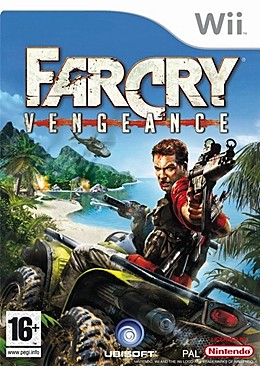
Far Cry Vengeance is a 2006 first-person shooter game developed by Ubisoft Montreal and published by Ubisoft for the Wii. It is a remake of Far Cry Instincts: Evolution, originally released for the Xbox, and features changed controls, new weapons and vehicles, and three additional levels. The game received largely negative reviews for its graphics, overly compressed FMVs, and poor enemy AI, though the controls were praised.

Far Cry 2 is a 2008 first-person shooter developed by Ubisoft Montreal and published by Ubisoft for Microsoft Windows, PlayStation 3 and Xbox 360. A top-down shooter version for mobile phones was developed and published by Gameloft. It is the second mainline entry in the Far Cry series. Set in a fictional African country engulfed in civil war, the storyline follows a mercenary who is assigned to kill the Jackal, a weapons dealer inflaming the conflict. The player navigates the open world, completing missions for factions and allies called Buddies while managing their health and equipment. A competitive multiplayer mode allows players to fight in teams or as individuals.
Far Cry is an anthology franchise of first-person shooter games, all of which have been published by Ubisoft. The first game, Far Cry, was developed by Crytek to premiere their CryEngine software, and released in March 2004. Subsequently, Ubisoft obtained the rights to the franchise and the bulk of the development is handled by Ubisoft Montreal with assistance from other Ubisoft satellite studios. The following games in the series have used a Ubisoft-modified version of the CryEngine, the Dunia Engine, allowing for open world gameplay. In the present, the franchise consists of six mainline games, a standalone expansion, and several spin-offs; additionally, the first game, initially developed for Microsoft Windows, saw a number of ports to video game consoles, which changed several elements and are therefore considered standalone releases.

Far Cry 3 is a 2012 first-person shooter game developed by Ubisoft Montreal and published by Ubisoft. It is the third main installment in the Far Cry series after Far Cry 2. The game takes place on the fictional Rook Islands, a tropical archipelago which can be freely explored by players. Gameplay focuses on combat and exploration. Players can use a variety of weapons to defeat human enemies and hostile wildlife, and the game features elements found in role-playing games such as skill trees and experience. After a vacation goes awry, protagonist Jason Brody must save his friends, who have been kidnapped by pirates, and escape from the island and its unhinged inhabitants.

Assassin's Creed is a historical action-adventure video game series and media franchise published by Ubisoft and developed mainly by its studio Ubisoft Montreal using the game engine Anvil and its more advanced derivatives. Created by Patrice Désilets, Jade Raymond, and Corey May, the Assassin's Creed video game series depicts a fictional millennia-old struggle between the Order of Assassins, who fight for peace and free will, and the Knights Templar, who desire peace through order and control. The series features historical fiction, science fiction, and fictional characters intertwined with real-world historical events and historical figures. In most games, players control a historical Assassin while also playing as an Assassin Initiate or someone caught in the Assassin–Templar conflict in the present-day framing story. Considered a spiritual successor to the Prince of Persia series, Assassin's Creed took inspiration from the novel Alamut by the Slovenian writer Vladimir Bartol, based on the historical Hashashin sect of the medieval Middle East.
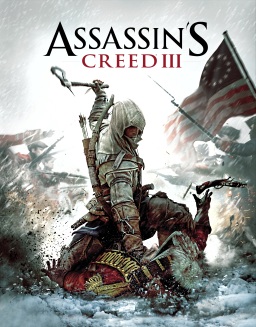
Assassin's Creed III is a 2012 action-adventure video game developed by Ubisoft Montreal and published by Ubisoft. It is the fifth major installment in the Assassin's Creed series, and a direct sequel to 2011's Assassin's Creed: Revelations. The game was released worldwide for PlayStation 3 and Xbox 360, beginning in North America on October 30, 2012, with a Wii U and Microsoft Windows release in November 2012. A remastered version of the game was released in 2019 for Windows, PlayStation 4, Xbox One and Nintendo Switch, and in 2021 for Google Stadia.

Clint Hocking is a Canadian video game designer and director. He has primarily worked at the Canadian divisions of Ubisoft, where he developed three titles, and briefly worked at LucasArts, Valve, and Amazon Game Studios.

Watch Dogs is a 2014 action-adventure game developed by Ubisoft Montreal and published by Ubisoft. It is the first installment in the Watch Dogs series. The game is played from a third-person perspective, and its world is navigated on foot or by vehicle. Set within a fictionalized version of the Chicago metropolitan area in 2013, the single-player story follows grey hat hacker and vigilante Aiden Pearce's quest for revenge after the killing of his niece. An online multiplayer mode allows up to eight players to engage in cooperative and competitive gameplay.

Far Cry 3: Blood Dragon is a 2013 first-person shooter game developed by Ubisoft Montreal and published by Ubisoft. It is a standalone expansion to Far Cry 3 and the eighth overall installment in the Far Cry franchise. Blood Dragon is a retro-futuristic parody of 1980s action films, cartoons and video games, and takes place on an open world island. Players assume the role of military cyborg Sergeant Rex "Power" Colt. Gameplay is largely similar to Far Cry 3, though several systems from the base game were simplified or removed, and it introduces the titular Blood Dragon, a massive dinosaur that fires lasers from its eyes and can be lured to attack enemy garrisons.
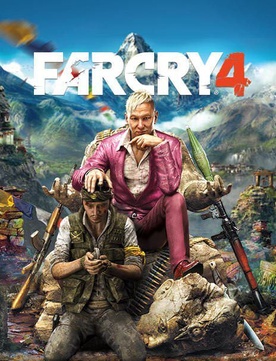
Far Cry 4 is a 2014 first-person shooter game developed by Ubisoft Montreal and published by Ubisoft. It is the successor to the 2012 video game Far Cry 3, and the fourth main installment in the Far Cry series. Set in the fictional Himalayan country of Kyrat, the game follows Ajay Ghale, a young Kyrati-American, who becomes caught in a civil war between Kyrat's Royal Army, controlled by the tyrannical king Pagan Min, and a rebel movement called the Golden Path. The gameplay focuses on combat and open world exploration; players battle enemy soldiers and dangerous wildlife using a wide array of weapons. The game features many elements found in role-playing games, such as a branching storyline and side quests. The game also features a map editor and both cooperative and competitive multiplayer modes.

TrackMania Turbo is a racing video game developed by Ubisoft Nadeo and published by Ubisoft. Announced at E3 2015, the title is the first TrackMania game released on consoles since 2009's TrackMania: Build to Race on the Wii. The game features support for virtual reality. The game was originally set to be released on 3 November 2015, but was delayed to 22 March 2016 to give additional time to the development team to further polish the game.

Watch Dogs 2 is a 2016 action-adventure game developed by Ubisoft Montreal and published by Ubisoft. It is the sequel to 2014's Watch Dogs and the second installment in the Watch Dogs series. It was released for the PlayStation 4, Xbox One and Windows in November 2016, for Amazon Luna in November 2020, and for Stadia in December 2020. Set within a fictionalized version of the San Francisco Bay Area, the game is played from a third-person perspective and its open world is navigated on-foot or by vehicle. Players control Marcus Holloway, a hacker who works with the hacking group DedSec to take down the city's advanced surveillance system known as ctOS. There are multiple ways to complete missions, and each successful assignment increases the follower count of DedSec. Cooperative multiplayer allows for competitive one-on-one combat and connecting with other players to neutralize a player who is causing havoc.

Far Cry 5 is a 2018 first-person shooter, developed by Ubisoft Montreal and Ubisoft Toronto and published by Ubisoft. It is the successor to 2014's Far Cry 4, and the fifth main installment in the Far Cry series. Set in Hope County, a fictional region of Montana, United States, the game revolves around the Project at Eden's Gate, a doomsday cult that has taken over the county at the command of its charismatic and powerful leader, Joseph Seed. Players control an unnamed junior deputy sheriff who becomes trapped in Hope County and must work alongside various resistance factions to liberate the region from the despotic rule of the Seeds and Eden's Gate. Gameplay focuses on combat and exploration; players battle enemy soldiers and dangerous wildlife using a wide array of weapons. The game features many elements found in role-playing games, such as a branching storyline and side quests. The game also features a map editor, a co-operative multiplayer mode, and a competitive multiplayer mode.
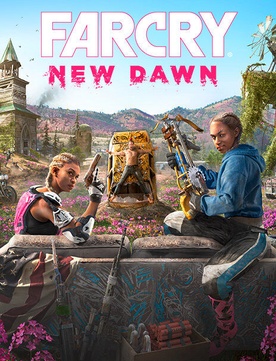
Far Cry New Dawn is a 2019 first-person shooter game developed by Ubisoft Montreal and published by Ubisoft. It is a spin-off and sequel to Far Cry 5, and the twelfth overall installment in the Far Cry series. Set seventeen years after one of the endings of Far Cry 5 which saw the fictional Hope County, Montana being devastated by a nuclear exchange known as "the Collapse", the game follows a group of survivors as they attempt to rebuild their community and defeat a gang of vicious bandits. Players assume the role of an unnamed security captain who, like Far Cry 5's deputy sheriff, is silent and highly customizable. New Dawn features most of the pre-existing gameplay elements of the series, including a large open world, capturing of outposts, and AI or co-op companions; it also introduces several elements from RPG gameplay, such as an upgradeable home base and increased reliance on crafting from limited supplies.
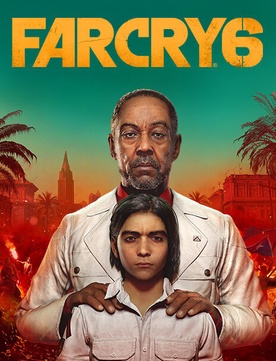
Far Cry 6 is a 2021 first-person shooter game developed by Ubisoft Toronto and published by Ubisoft. It is the sixth main installment in the Far Cry series and the successor to 2018's Far Cry 5. The game is set on the fictional Caribbean island of Yara, ruled as a dictatorship by "El Presidente" Antón Castillo who is raising his son Diego to follow in his rule. Players take on the role of guerilla fighter Dani Rojas, attempting to topple Castillo and his regime. Gameplay focuses on combat and exploration; players fight enemy soldiers and dangerous wildlife using a wide array of weapons and gadgets. The game features many elements found in role-playing games, such as a leveling up system and side quests. It also features a cooperative multiplayer mode.
Wenja is a constructed fictional language in the video game Far Cry Primal, developed by Ubisoft. It is spoken by the Wenja, a fictional nomadic people in the game's world set in the valley of Oros in Central Europe. Two similar dialects, spoken by the Udam and the Izila tribes, are also present in the game. The language was developed for the game by a team of linguists led by the Indo-Europeanist Andrew Byrd. The use of a prehistoric language instead of English was intended to create a more immersive in-game experience.



















